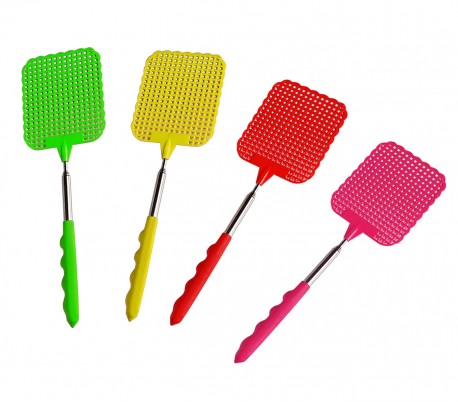
Flashcards are a good and motivating tool that I use in class when I
teach English in Kindergarten.
The use of flashcards helps kids to understand the language and learn it
better.
Some flashcards games that I use in class are:
Go and touch
I play this game with the kids when I want them to practise colours vocabulary.
Kids have to walk around the classroom while I sing a song...When I stop
singing the song I say Go and touch something blue...and children
have to touch a blue object.
Go and find
I display several flashcards in the classroom and I ask students Go
and find the apple. In that case, children have to find the right flashcard
and give it to me.
Fly swatter game 1
I place some flashcards on the floor in a circle. Two students are given a
a flys swatter. I start to sing a song and when I stop I say: Touch the apple (
if the vocabulary is related to fruit).
Fly swatter game 2
Another version of this games is to place 2
flashcards in a row on the floor. Two kids are given a Fly swatter and they are
standing on a line. Then I say : Touch the apple . The two
kids have to run and be the first and touch the right flashcard.
Basketball game
For this activity we need 2 big baskets
o boxes. We put 2 flashcards standing on the front part of the baskets or
boxes. Then students line up and they have to try to dunk a ball in the right
basket depending on the sentence the teacher has said. E.g: there are two
baskets, one with a strawberry flashcard and the other one with a banana...If
the teachers says I like strawberries ...Kids will have to throw the ball
in the strawberry basket.
Usar flashacards para hacer juegos motiva
mucho a los alumnos de infantil y además les ayuda a comprender y aprender
mejor el idioma.
Juegos de
Flashcards que uso en clase de infantil:
Go and touch
Este juego lo
uso mucho para practicar los colores en inglés. Mientras canto una canción los
niños se mueven por la clase…Cuando para de cantar la canción, ellos se paran
también y escuchan la orden que les doy Go and touch something blue ( tienen
que encontrar un objeto azul en la clase y tocarlo).
Go and Find
Pongo las
tarjetas de vocabulario por la clase ( en la pared, sobre las mesas, en el
suelo) y les pido que vayan a buscar un tarjeta en particular ( ve y encuentra
la manzana…). En este caso cuando encuentran la tarjeta me la devuelven.
Juego del
matamoscas 1
Coloco unas serie
de tarjetas de vocabulario en forma de circulo en el suelo. Doy 2 matamoscas a
2 alumnos y empiezo a cantar una canción mientras los alumnos van caminando
alrededor del circulo. Paro de cantar y digo la siguiente frase touch the
apple. Los dos alumnos tienen que intentar tocar la tarjeta correspondiente
y ser el primero en conseguirlo.
Juego del
matamoscas 2
Otra versión
de este juego es colorcar 2 tarjetas en
el suelo separadas. Le damos 2 matamoscas a dos alumnos que se preparan para
hacer una carrera. Cuando digo la una de las dos palabras de las tarjetas del
suelo, los alumnos tienen que correr hacia la tarjeta indicada y tocarla con el
matamoscas.
Juego del
baloncesto
Colocamos 2
cajas grandes o 2 barreños en el suelo uno a poca distancia del otro. Delante
de cada barreño ponemos una tarjeta de vocabulario.
Los niños se
colocan en fila delante de los barreños ( a 1,50m) y le damos una pelota al
primer niño de la fila. Cuando la profesora dice I like apples…tiene que
encestar la pelota en el barreño de las manzanas.




